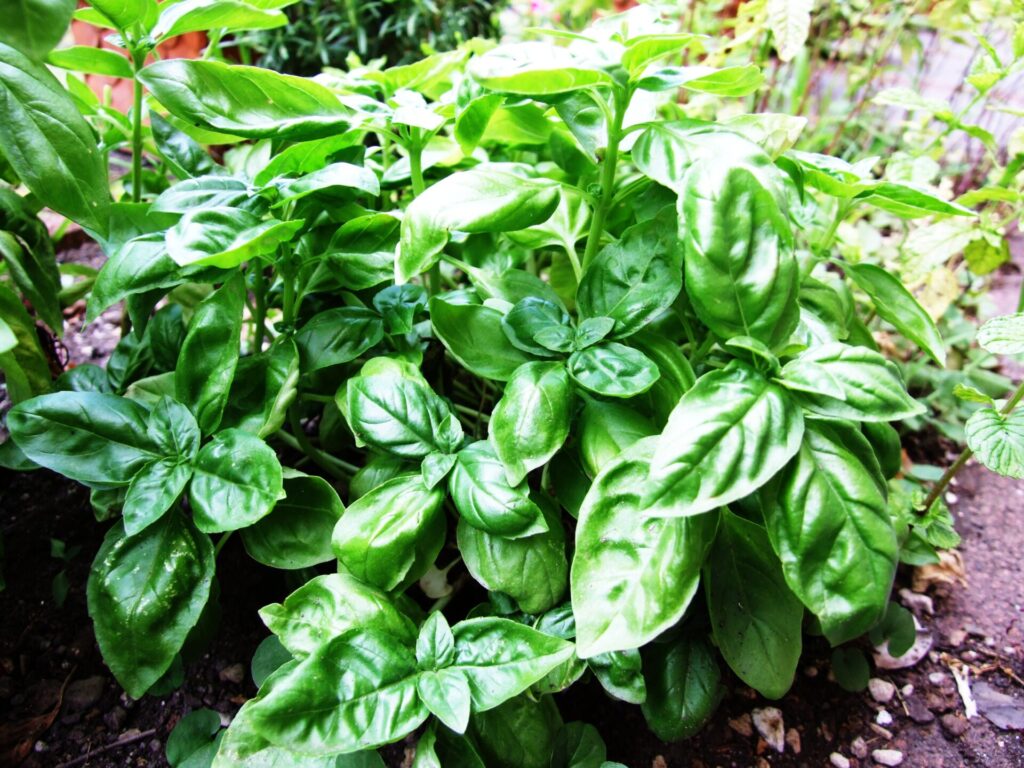Basil plants are one of the most popular herbs to grow and also one of the easiest. Sweet basil (Ocimum basilicum) is a member of the mint family. It is closely identified with Italian cooking, although it is originally from India. The extremely aromatic leaves also have a delightful variety of flavors, from the slightly lemony-mint of sweet basil to cinnamon and licorice. Leaf colors span from rich green to deep purple, with smooth or crinkled leaves. The flowers are insignificant but very popular with bees. All types of basil grow easily in warm, sunny weather. The leaves are commonly used in cooking, but the flower buds are also edible. This fast-growing herb thrives equally well in gardens and containers. With sufficiently warm weather, new basil plants are ready for pruning (to encourage bushier growth) in about six weeks.
Varieties
Genovese (Ocimum basilicum ‘Genovese’): This variety has larger leaves than the species sweet basil, with all the flavor.
Cinnamon or ‘Mexican Spice’ (Ocimum basilicum ‘Cinnamon’): Enjoy the green foliage, purple flowers, and spicy, cinnamon scent.
Lemon basil (Ocimum basilicum x citriodorum): This is a hybrid plant with a distinct odor and taste of citrus.
Thai basil (Ocimum. basilicum var. thyrsiflora): This variety of sweet basil has a sweeter taste with a hint of licorice. It is very common in Asian cuisine, especially Vietnamese dishes.






